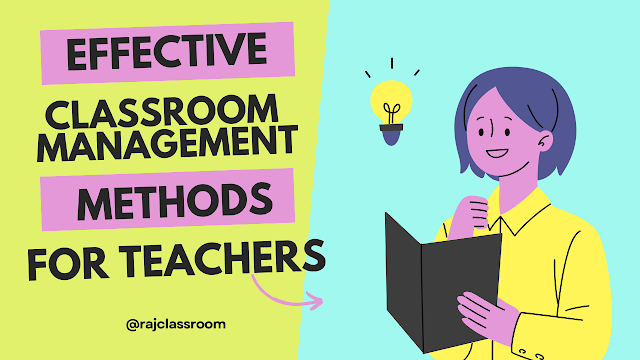Classroom Management- Classroom Management Strategies and Techniques
Classroom management is the process teachers use to ensure that classroom lessons run smoothly without disruptive behavior from students compromising the delivery of instruction. It includes the prevention of disruptive behavior preemptively, as well as effectively responding to it after it happens.
1. Establish Clear Expectations: Set clear and consistent rules and expectations from the beginning of the school year. Ensure that students understand what is expected of them in terms of behavior and classroom procedures.
2. Positive Reinforcement: Use positive reinforcement techniques to acknowledge and reward good behavior. Praise and encourage students when they follow the rules.
3. Classroom Arrangement: Organize your classroom in a way that minimizes distractions and encourages focus. Have a designated area for different activities, such as a reading corner or a group work area.
4. Routine and Schedule: Create a daily routine and schedule. Consistency in the daily schedule helps students know what to expect and reduces disruptions.
5. Visual Aids: Use visual aids and posters to remind students of rules and expectations. Visual cues can be especially effective with younger students.
6. Engaging Lessons: Design lessons that are engaging and interactive. As a blogger and content creator, you can use your creativity to make lessons fun and memorable.
7. Classroom Jobs: Assign classroom jobs to students. This gives them a sense of responsibility and can help with classroom management.
8. Conflict Resolution: Teach students conflict resolution skills so they can handle disputes independently, reducing the need for your intervention.
9. Communication: Maintain open communication with parents. Let them know about classroom expectations and updates. This can help address behavioral issues early on.
10. Use Technology: Incorporate technology, such as interactive whiteboards or educational apps, to keep students engaged and make learning more interactive.
11. Data Tracking: Keep records of student behavior and use data to identify patterns and areas for improvement.
12. Peer Support: Encourage students to support each other. Peer mentoring or buddies can be effective in promoting positive behavior.
13. Professional Development: Continuously improve your classroom management skills through professional development and by seeking advice from experienced colleagues.
Remember that classroom management is an ongoing process. It may take time to find the strategies that work best for your specific class and teaching style. Adapt and refine your approach as needed to create a positive and productive learning environment.
2. Positive Reinforcement: Use positive reinforcement techniques to acknowledge and reward good behavior. Praise and encourage students when they follow the rules.
3. Classroom Arrangement: Organize your classroom in a way that minimizes distractions and encourages focus. Have a designated area for different activities, such as a reading corner or a group work area.
4. Routine and Schedule: Create a daily routine and schedule. Consistency in the daily schedule helps students know what to expect and reduces disruptions.
5. Visual Aids: Use visual aids and posters to remind students of rules and expectations. Visual cues can be especially effective with younger students.
6. Engaging Lessons: Design lessons that are engaging and interactive. As a blogger and content creator, you can use your creativity to make lessons fun and memorable.
7. Classroom Jobs: Assign classroom jobs to students. This gives them a sense of responsibility and can help with classroom management.
8. Conflict Resolution: Teach students conflict resolution skills so they can handle disputes independently, reducing the need for your intervention.
9. Communication: Maintain open communication with parents. Let them know about classroom expectations and updates. This can help address behavioral issues early on.
10. Use Technology: Incorporate technology, such as interactive whiteboards or educational apps, to keep students engaged and make learning more interactive.
11. Data Tracking: Keep records of student behavior and use data to identify patterns and areas for improvement.
12. Peer Support: Encourage students to support each other. Peer mentoring or buddies can be effective in promoting positive behavior.
13. Professional Development: Continuously improve your classroom management skills through professional development and by seeking advice from experienced colleagues.
Remember that classroom management is an ongoing process. It may take time to find the strategies that work best for your specific class and teaching style. Adapt and refine your approach as needed to create a positive and productive learning environment.






.jpg)



Comments